Significant + Insignificant Mounds: Decolonizing Landscape
∙ Jesse Vogler ∙ FL17
A Matter of Horizons
ASLA St. Louis ∙ student merit award
A Matter of Horizons
∙ Jesse Vogler ∙ FL17
A Matter of Horizons
ASLA St. Louis ∙ student merit award
A Matter of Horizons
The American Bottom: a culturally rich landscape of precolonial inhabitation, typified by Native American mound construction, has had its history archived and rewritten through the lens of colonial signification. The conditions of the project engage in issues of the following: contemporary narratives of place-ness and indigeneity, without historicizing and prescribing a colonial viewpoint; processes of American landscape formation, and richer and more productive zones of contact between contemporary colonial and indigenous inhabitants.
The proposed landscape interventions forgo the ascription of meaning to matter but rather understand the vitality of matter. The proposal reckons with modernity’s replacement of indigeneity through rupture and self-justification. Three critical conditions constitute a framework for understanding the position of the project within this larger context. Mounds are medium; this argues that mounds are perceivable. Mounds are in flux; this argues that mounds are in various stages of construction and destruction. These occur culturally, geologically, and ontologically. Mounds are epicenters of disruption; this argues that mounds have transient moments of intensity which have a sphere of influence.
The sites selected lay on a continuum of remoteness in regard to an acoustic horizon (threshold or boundary at which acoustic perception is null) with respect to the listener-composer (one who engages in the multisensory landscape).
The proposed landscape interventions forgo the ascription of meaning to matter but rather understand the vitality of matter. The proposal reckons with modernity’s replacement of indigeneity through rupture and self-justification. Three critical conditions constitute a framework for understanding the position of the project within this larger context. Mounds are medium; this argues that mounds are perceivable. Mounds are in flux; this argues that mounds are in various stages of construction and destruction. These occur culturally, geologically, and ontologically. Mounds are epicenters of disruption; this argues that mounds have transient moments of intensity which have a sphere of influence.
The sites selected lay on a continuum of remoteness in regard to an acoustic horizon (threshold or boundary at which acoustic perception is null) with respect to the listener-composer (one who engages in the multisensory landscape).
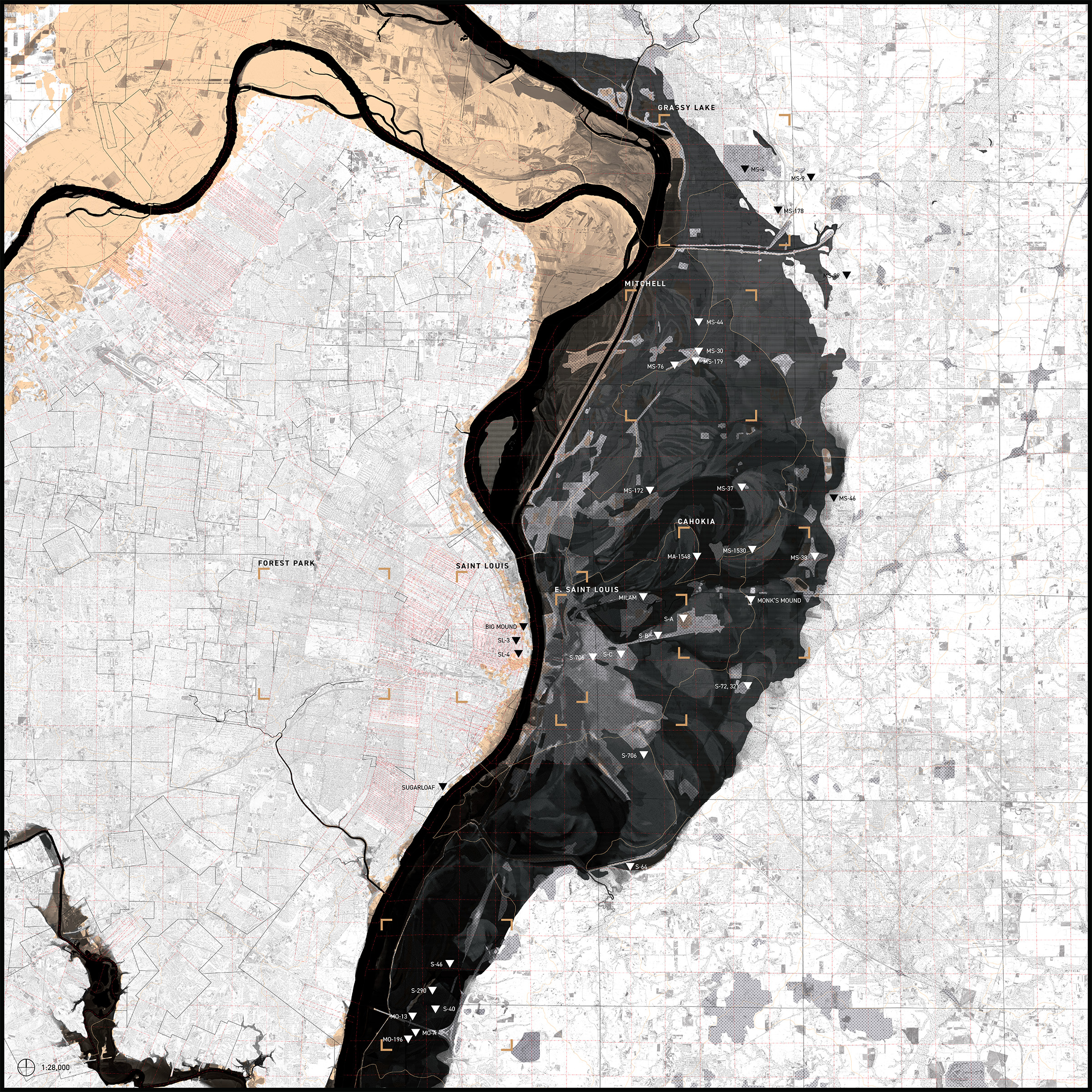
DECOLONIZING LANDSCAPE: significant + insignificant mounds
Preliminary group research on mound settlements and other mounds throughout the American Bottom and St. Louis was conducted and synthesized into a large-scale map of the region. The selected mound sites of particular investigation were the following: Cahokia, Big Mound, Sugarloaf, and Milam.
ESTABLISHING HORIZON: reconceptualizing volume
A mound is a mass occupying a particular volume. Volume has a duplicity of meaning, it is both an amount of space occupied by an object and an intensity. Therefore, when volume is redefined as the boundary between the occupation of one medium and another sound becomes volume, in effect a mound of sound or a volume of volume.
![]() The acoustic horizon of a single FM transmitter emitting a single tone is tracked and mapped in a radial fashion. The perception of the tone degrades along a gradient (a thickened boundary) as the listener-composer moves away from the source.
The acoustic horizon of a single FM transmitter emitting a single tone is tracked and mapped in a radial fashion. The perception of the tone degrades along a gradient (a thickened boundary) as the listener-composer moves away from the source.
CAHOKIA: proximate acoustic horizon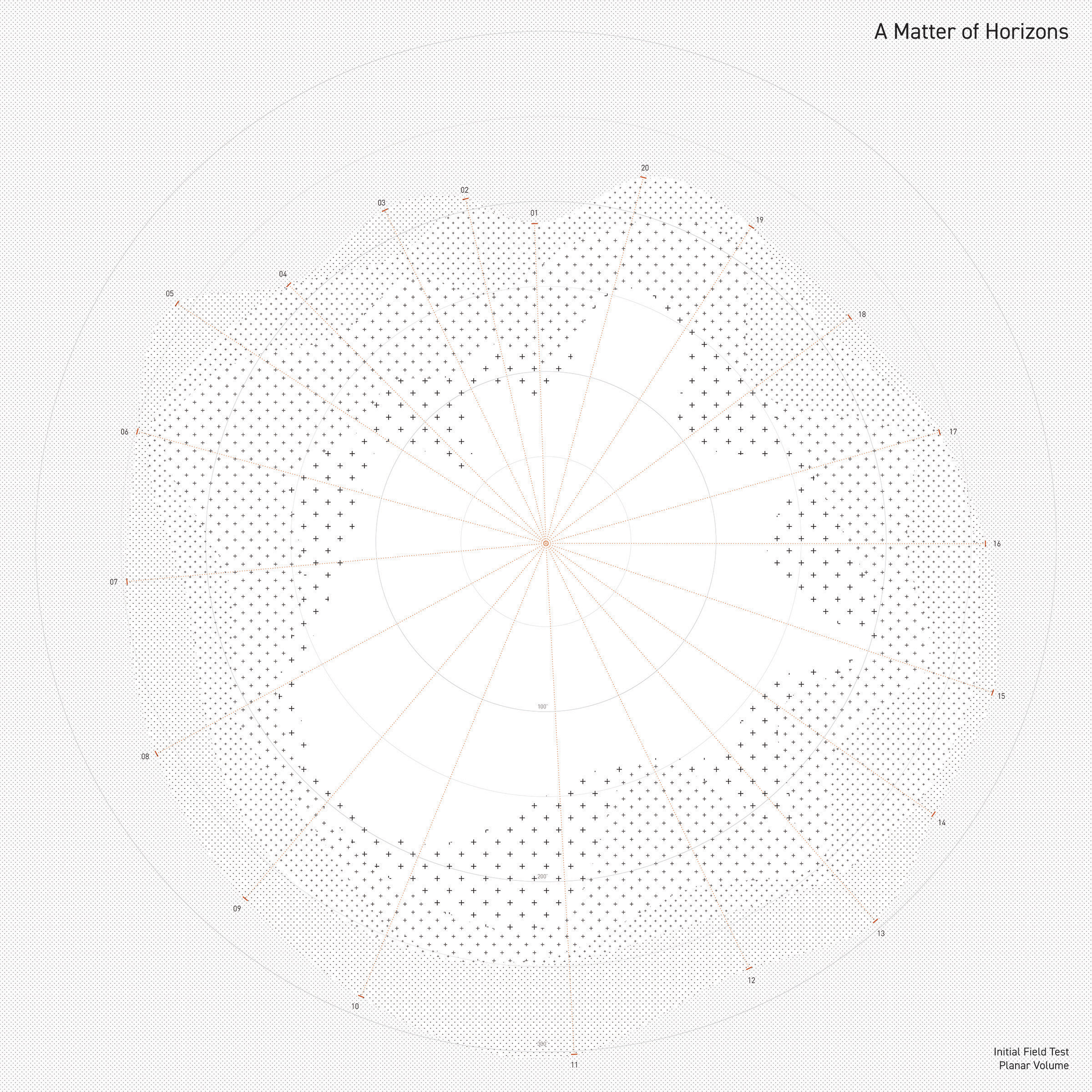 The acoustic horizon of a single FM transmitter emitting a single tone is tracked and mapped in a radial fashion. The perception of the tone degrades along a gradient (a thickened boundary) as the listener-composer moves away from the source.
The acoustic horizon of a single FM transmitter emitting a single tone is tracked and mapped in a radial fashion. The perception of the tone degrades along a gradient (a thickened boundary) as the listener-composer moves away from the source.The Cahokia Mounds are the most legible and arguably well-known of the sites selected for the investigation. However, this is not simply a pristine landscape. The mounds have been altered and removed throughout time. Monk’s Mound stands as the largest pre-Columbian earthwork in North America.
 Medium: sod, bell-shaped metal tube, AM/FM radio, wood stand
Medium: sod, bell-shaped metal tube, AM/FM radio, wood stand
The Cahokia intervention consists of a single source, and a single listener-composer. At the top of Monk’s Mound, a speaker connected to a radio receiver is placed at the bottom of a single borehole. A bell-shaped metal tube is then set into the ground.
![]()

As the listener-composer puts their ear to the ground, one hears not the chthonic murmurings of the earth below but rather a reversal of expectations, a Schizophonia. Instead, the listener-composer hears the sounds of the AM radio, the heartbeat of America where religion and politics are not so different.
MILAM: distributed acoustic horizon
The Milam Landfill is situated a mere two miles from Monk’s Mound, and is often confused with the mound settlement. The contemporary manifestation towers above at 220’, at which height the redefined Midwestern mustaba is at the same elevation as the crest of the Gateway arch and visible from the top of Monk’s Mound.
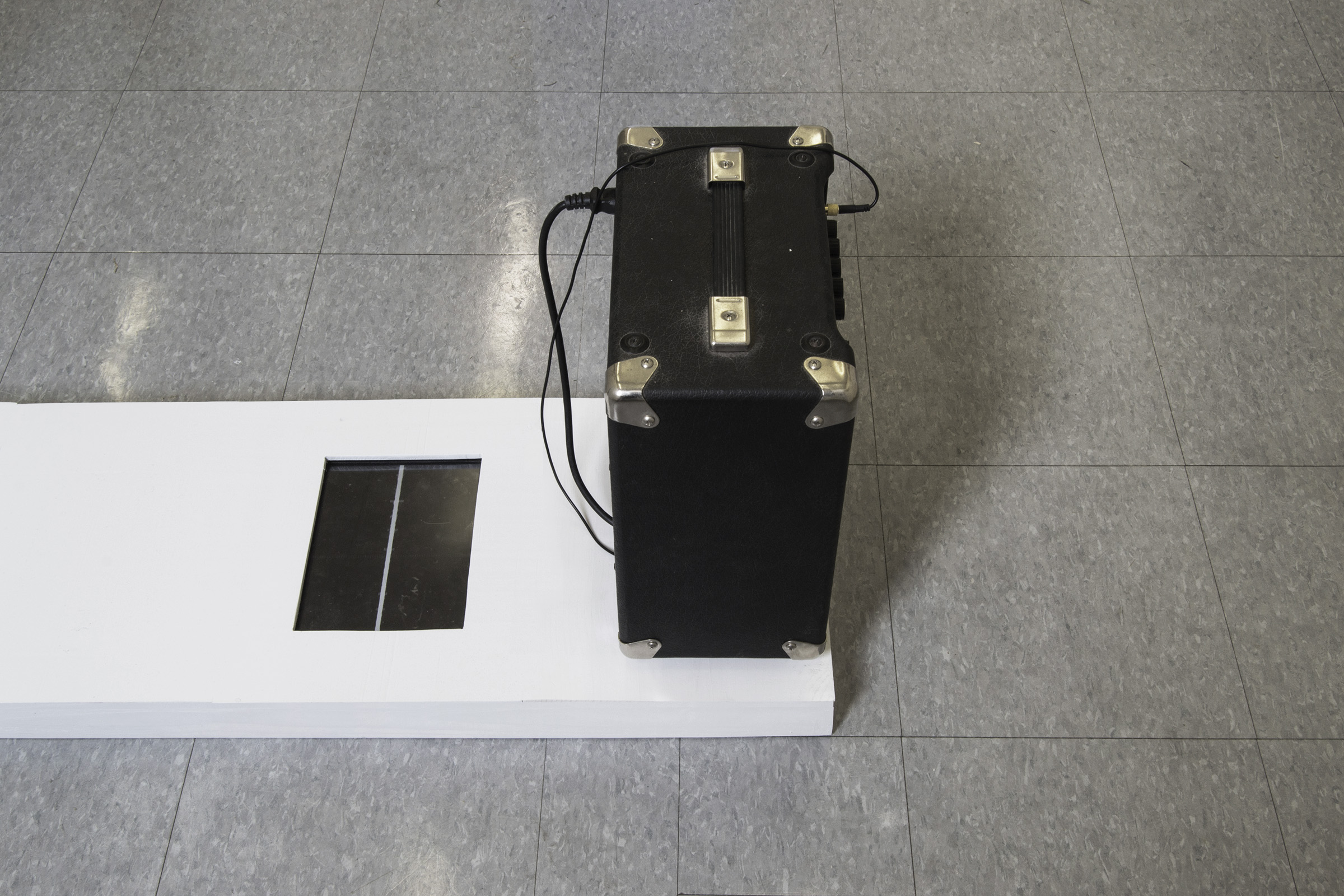

The Milam intervention consists of a single source and multiple listener-composers. A single broadband seismometer is placed at the bottom of a borehole through the depth of the landfill. The movements of the settling waste mass is converted to an audio signal and broadcasted via loudspeakers around the perimeter of the site.

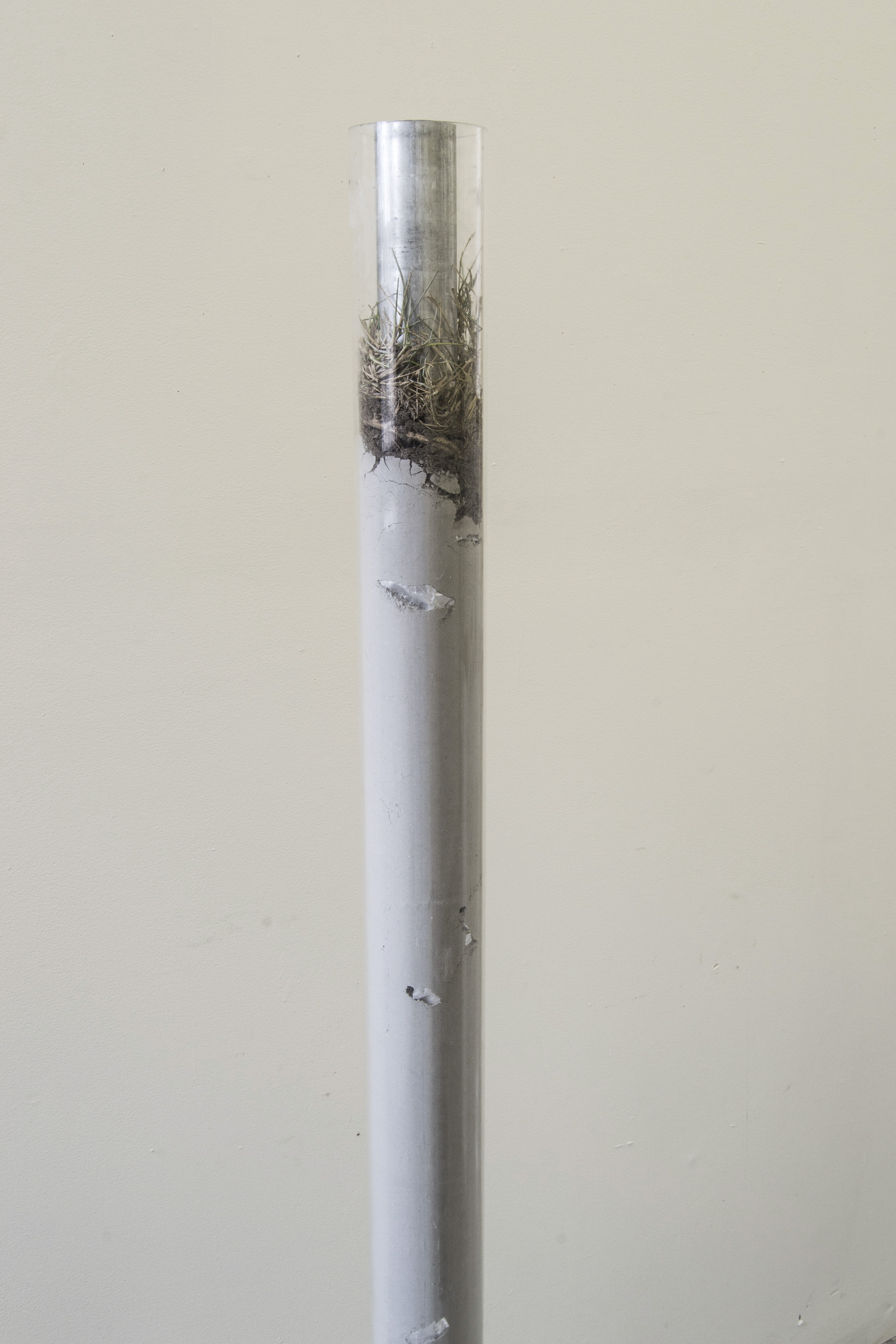
The sectional profile of the Milam is represented through the materiality of production methods as well as literal translations. The profile reveals the minimal amount of separation between the waste mass and the subsurface landscape. In this, humanity’s legacy is considered.
Medium: translated audio waveform from seismic movement.
The peaks in the waveform correspond to waste mass movement. The amplitude is corollary to the intensity of the shifting and settling. Digital geokymophony programs were used to translate the seismic analog waveform into an audio signal discernible to human perception.
BIG MOUND: interior acoustic horizon
The disturbed landscape of Big Mound lies downtown at the base of the I-70 overpass. The only testament to the Mound grouping is a large rock with an accompanying inscription, a sign with the history, and the referential street name, Mound St.
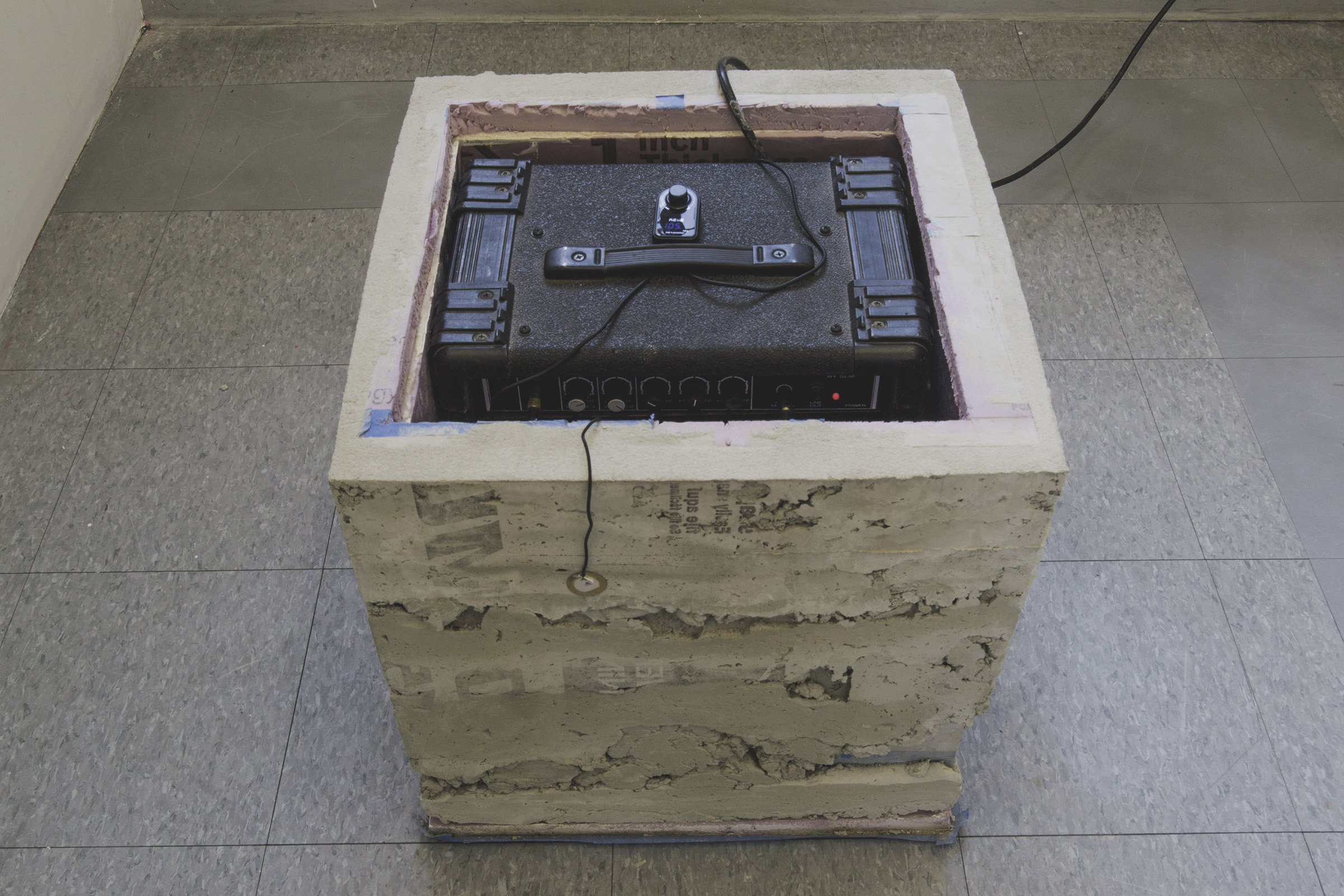 Medium: piezo disc, amplifier, cast-concrete mass, FM transmitter, battery pack, load tester
Medium: piezo disc, amplifier, cast-concrete mass, FM transmitter, battery pack, load testerThe Big Mound intervention consists of a single source and multiple listener-composers. A piezo disc is attached to the base of the overpass and the sound is transmitted to the listener-composers above via an amplifier and FM transmitter interrupting their regular broadcasting as they drive along.
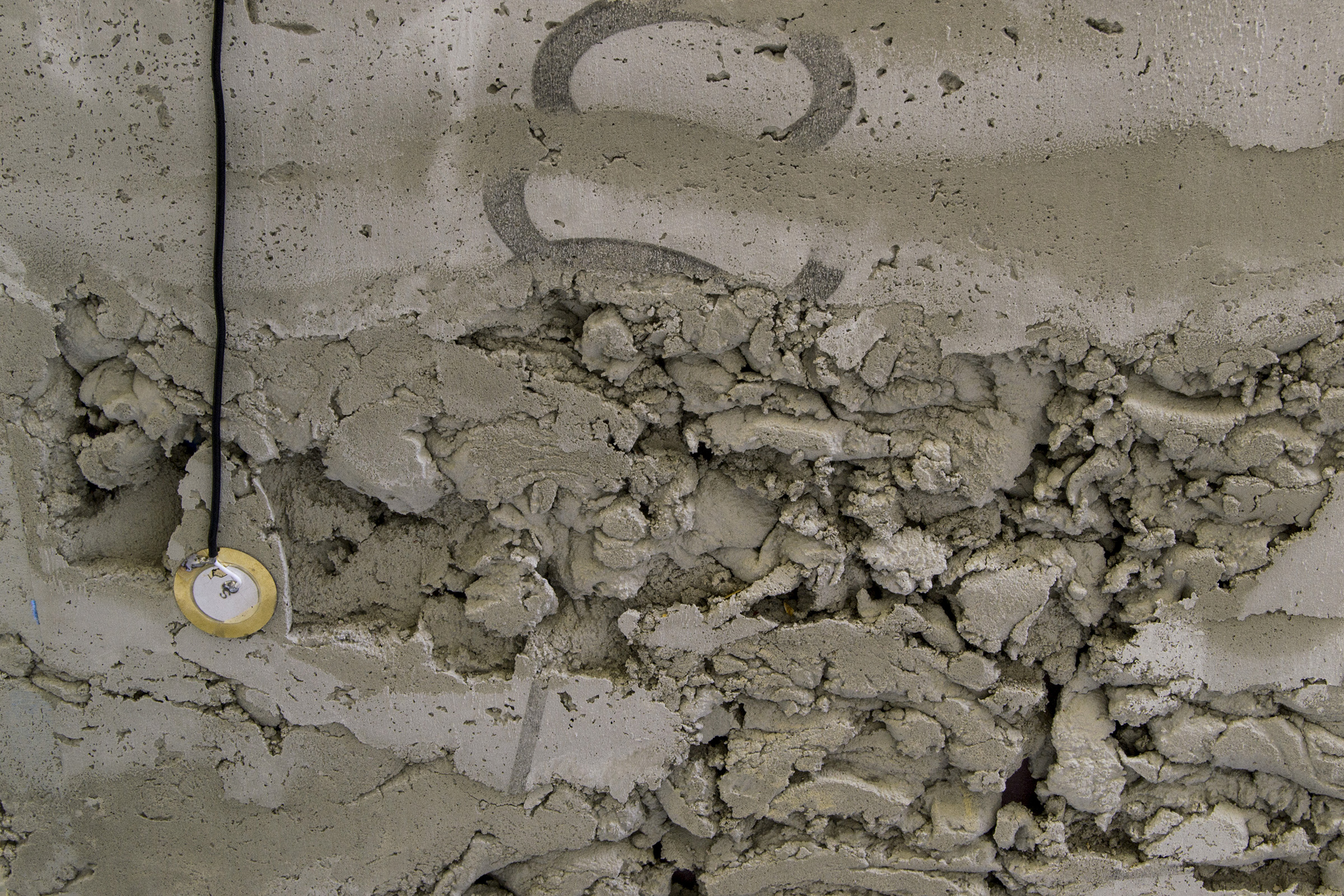
The signal canceling broadcast reveals the power of the void. The mound is not so much removed as remote. There is a carving of silence, a punctuated ambience, replacing the expected radio feedback. The only sound one hears is the vibrations of their auto resonating through the structure of modernity.
SUGARLOAF: remote acoustic horizonThe Sugarloaf mound lies south of the city off of I-55. This landscape has been dramatically altered throughout history. The mound had been partially removed for a dumping ground, since replaced, and a house was built on top of it, only recently removed.
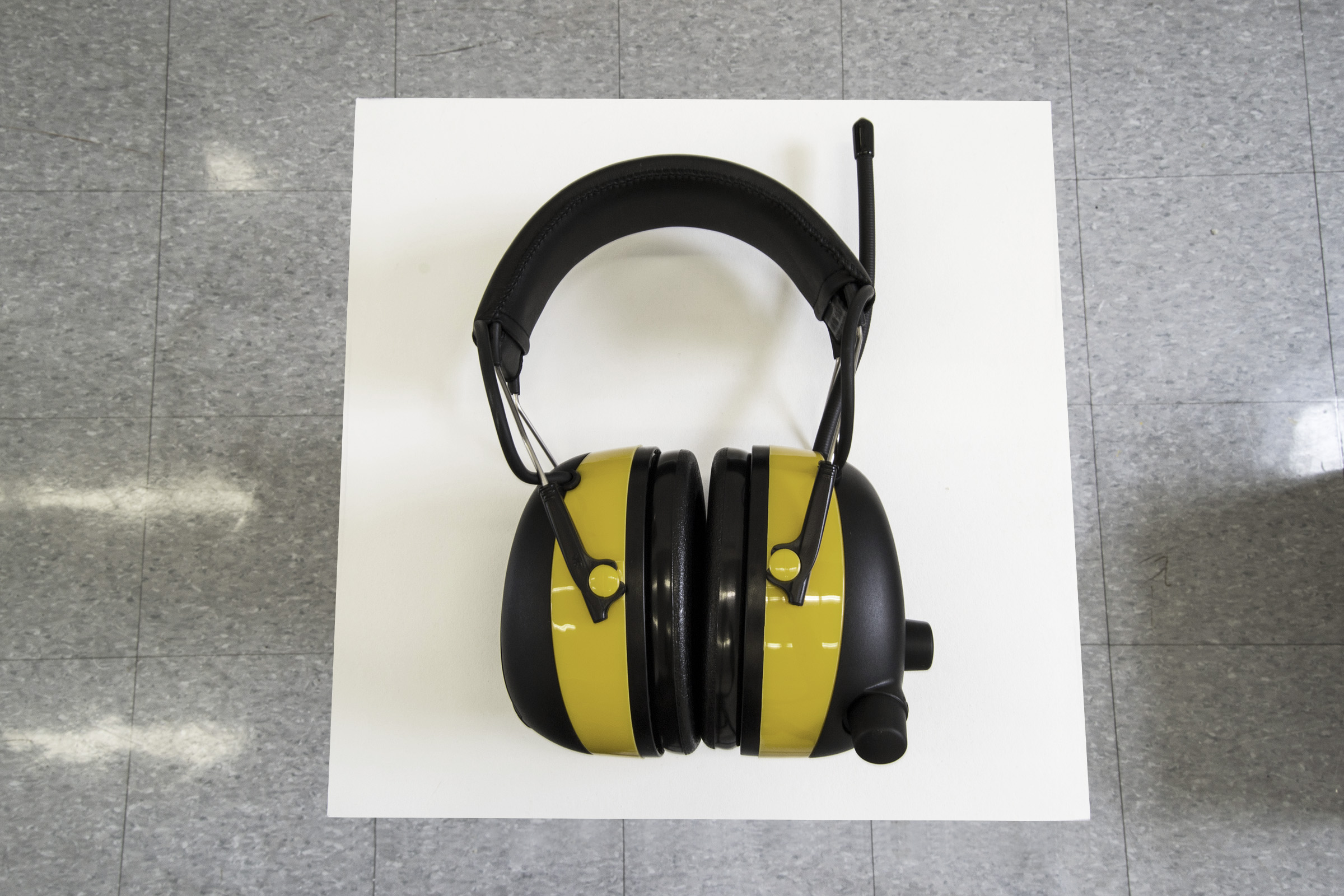 Medium: AM/FM headphones, wood stand, (4) digital recorders, (4) recorded audio tracks, (4) FM transmitters, (4) Battery packs, (4) Load testers
Medium: AM/FM headphones, wood stand, (4) digital recorders, (4) recorded audio tracks, (4) FM transmitters, (4) Battery packs, (4) Load testersThe Sugarloaf intervention consists of multiple sources and multiple listener-composers. Four FM transmitters, connected in various ways to distributed audio sources, are located at the corners of the site broadcasting different audio transmissions across the site and surrounding landscape.
![]()
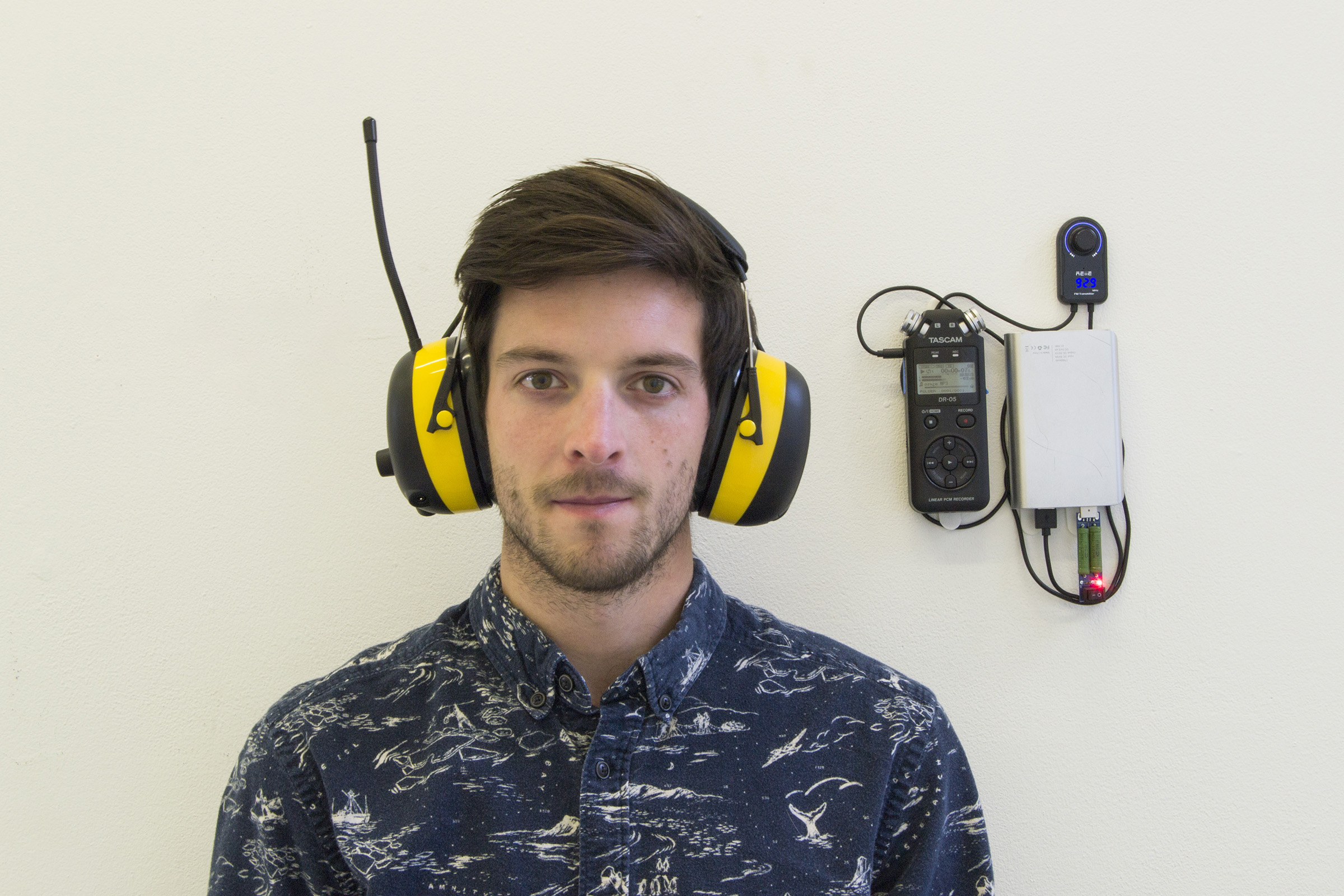
The audio transmissions are representative of competing voices, an intent to communicate versus a failure to be heard. The sources are stakeholders in the site: the Deed’s office in St. Louis, the Osage tribe, the previous resident of the house, and the adjacent industries. As the listener-composer traverses the site, the different audio transmissions harmonize, overwrite, and cancel relative to position.
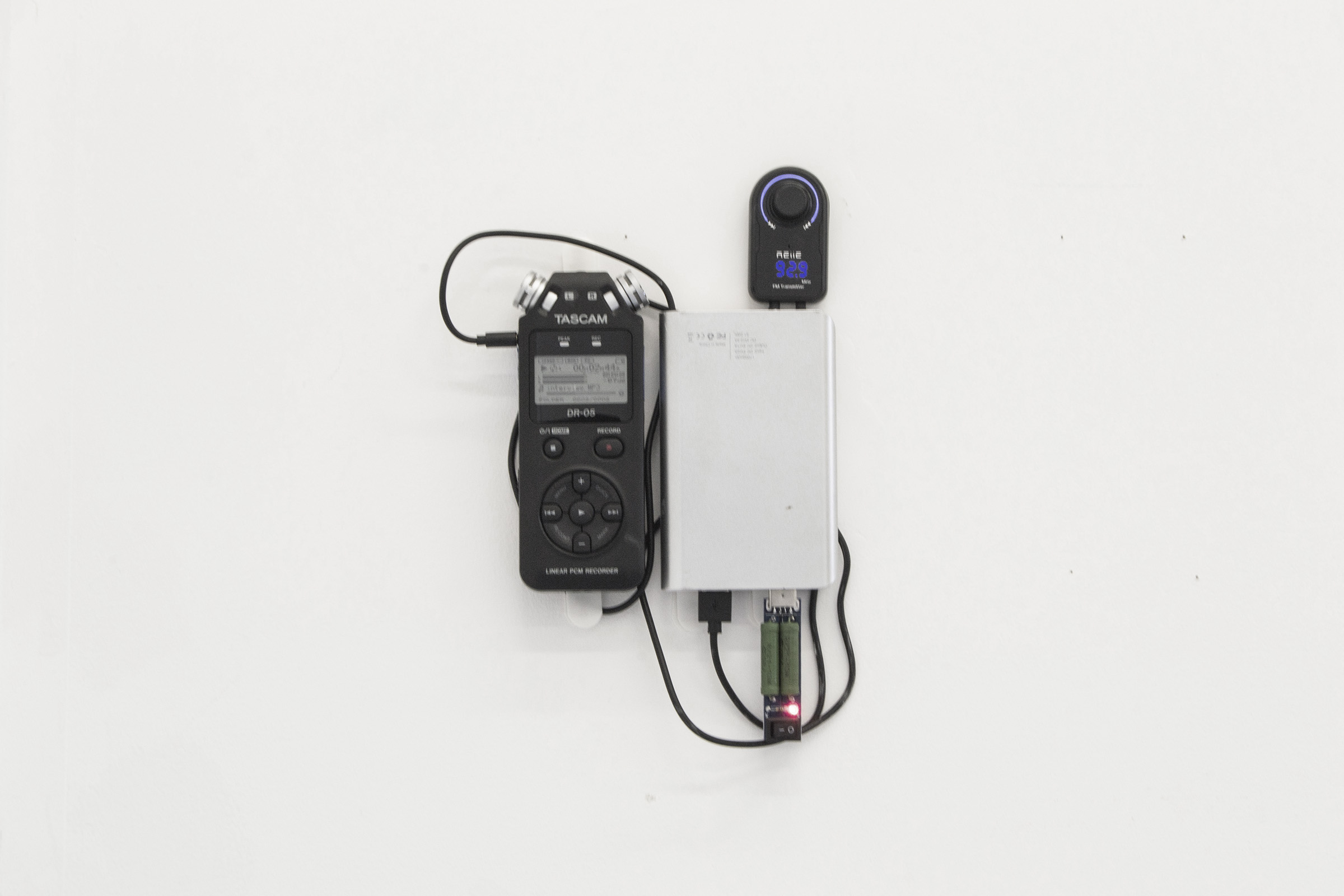
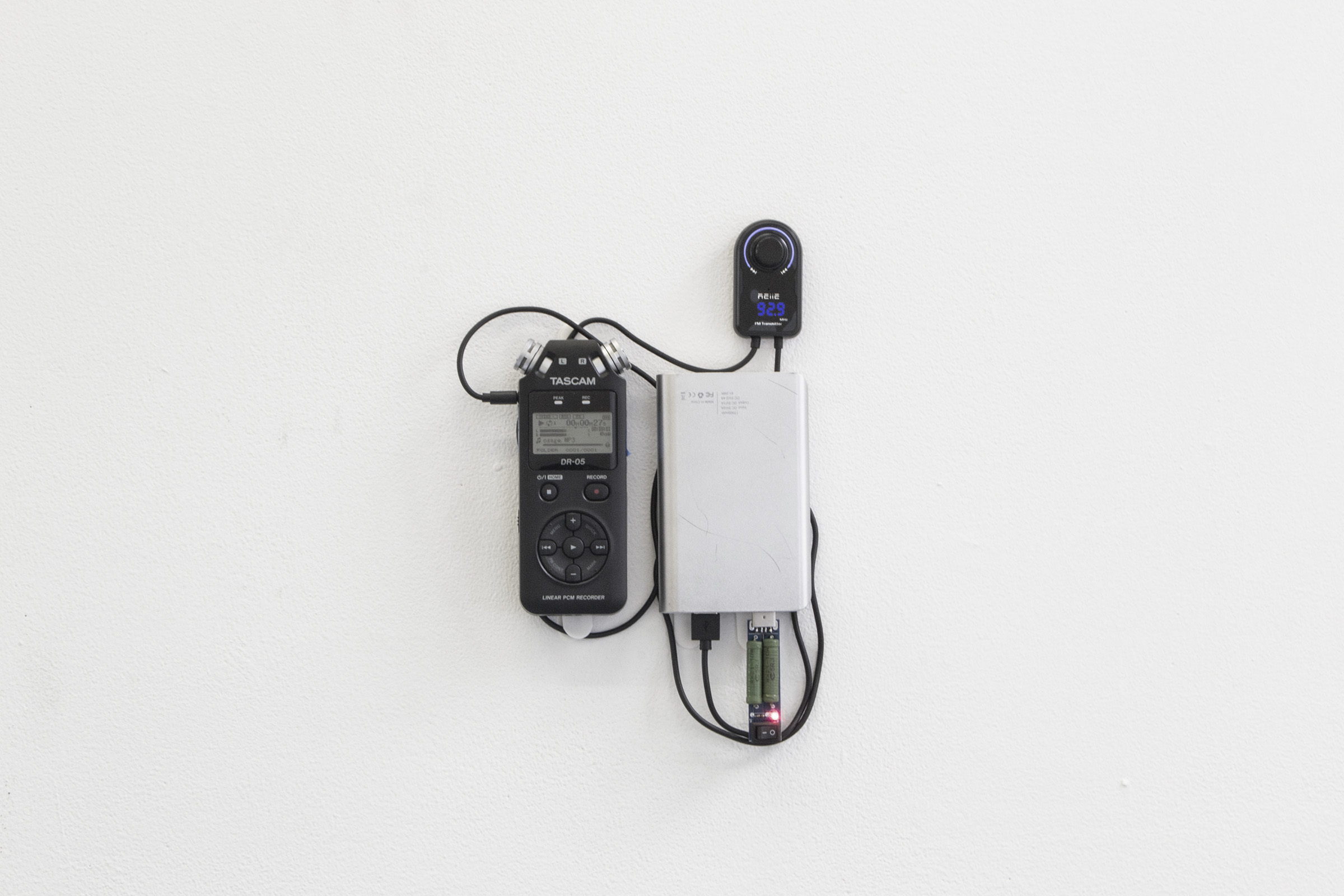

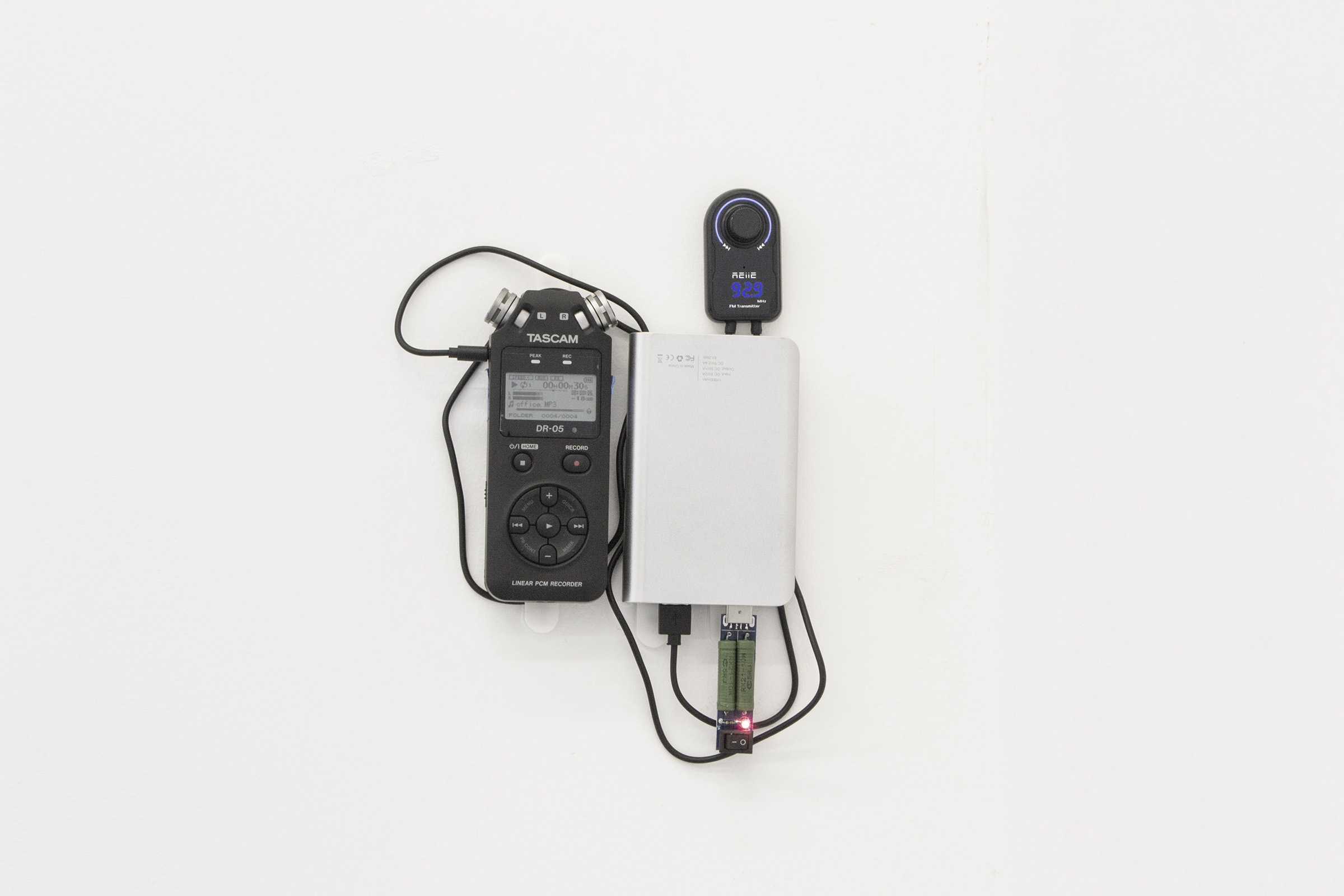
The Deed’s office represents property rights, audio is of the banal office environment. The Osage tribe represents present day ownership, audio is of a roll call at one of their hearings. The interview represents prior inhabitation, audio is of the transcript. The industry represents the agents of erasure, audio is of the environment.